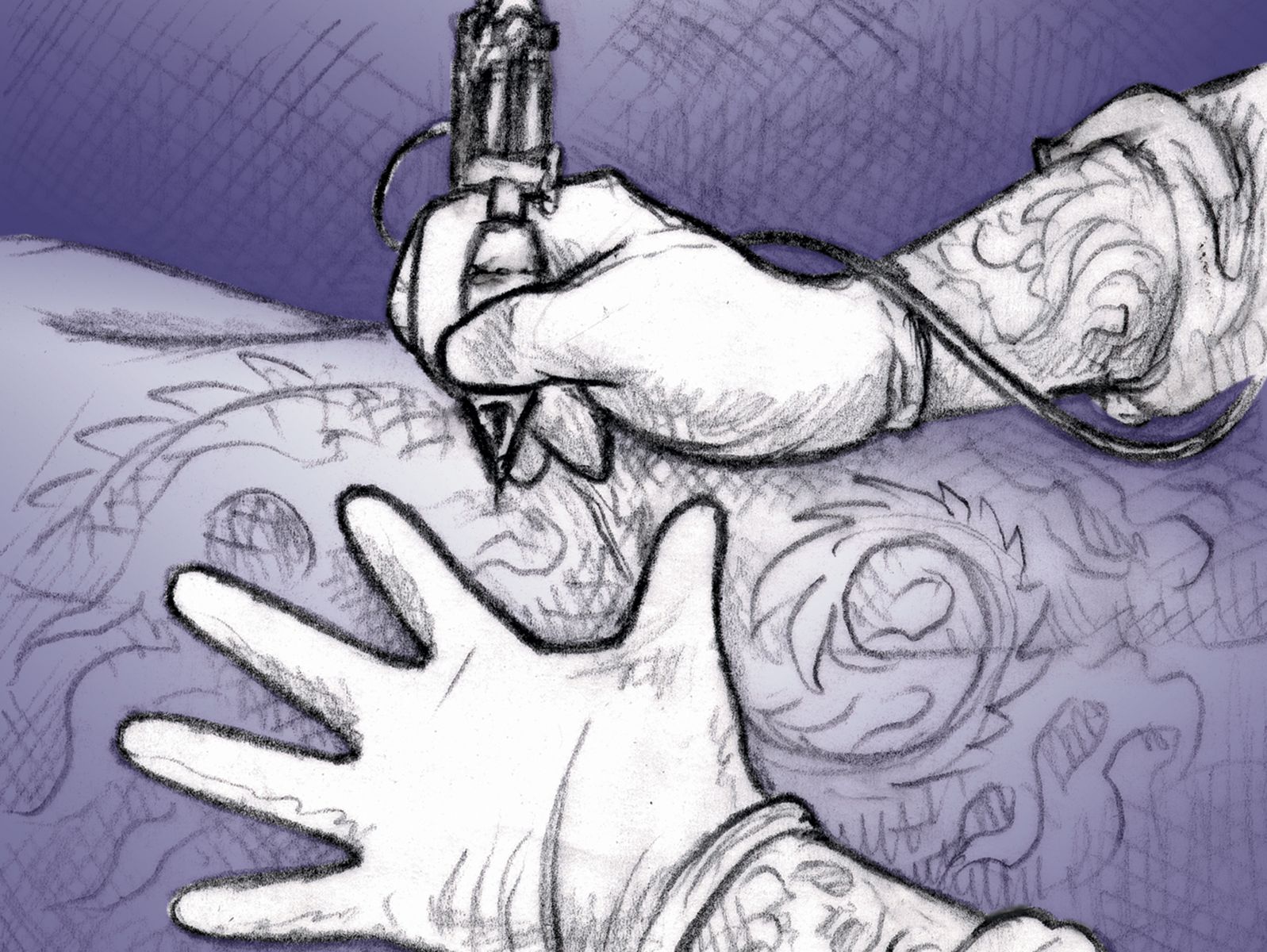The new artistic ideal of slowing down and working more carefully has helped bring about all kinds of advances in machines, pigments, tubes and all sorts of other tattooing essentials. The modern electric tattoo machine, although basically unchanged for over 100 years, has been refined in many aspects and now can be tuned to puncture the skin in exactly the artist’s desired manner. Rotary tattoo machines, long avoided by most serious tattooers, have reached a level of quality that has put them into the hands of a seriously large proportion of tattoo studios today, making them competetive with traditional machines for the first time. In addition, tattooing methods have recently begun benefiting from ergonomics, the science of making equipment that fits the user. Ergonomics have brought about developments in practical aspects of tattooing including machine weight, the shape of the tube grip, modern massage tables and adjustable chairs; these innovations have made both the artist and client more comfortable and allow for more productive sessions.

Pigments have also evolved in exciting ways. Almost every color in the spectrum is now available from many different suppliers using numerous different kinds of pigment, many of them tried-and-true in skin for decades, others brand-new on the market, promising but without those years of having been used and proven. Many of these new pigments are thinner and much easier to use than traditional flake powder pigments, which not only make the job easier but also make possible sharper detail and more control over subtlety. Artists can use all these different pigments to mix their own custom colors, making their palettes unique, although the explosion of variety available in premixed pigments has made custom mixing far less necessary than it used to be.
Now that we have a limitless range of styles and designs to choose from and sophisticated equipment and pigments to apply them with, all we need is a better way of transferring our designs. In the old days we used acetate stencils, which made a very crude impression on the skin that could easily be wiped off prematurely. The Traditional American style of tattoo design evolved from these limitations, employing overly simple line drawings to make it easier for non- artistic tattooists to be able to follow the design and still make it readable and attractive.
However, the breakthrough to using hectograph stencils solved many of these problems, making possible more sophisticated designs including tattoos that take hours just for the outline, or methods where the design is applied shading first, without the outlining process as the beginning stage. Never before have we had so many choices. In the future we may see non-toxic, alcohol-soluable inkjet stencils in full color, allowing for an even broader tattoo vocabulary and easier, more intuitive ways of handling our favorite tattoo subjects.
Despite all of these exhilarating developments, tattooing is not yet out of the ghetto. Even with new TV programs giving tattooing a more positive spin, popular culture has been painting an ugly and simple-minded image of the craft for such a long time now that it’s become hard for the public to fully accept the idea of a new, improved tattoo trade. This has changed a great deal: The average person today can easily visualize themselves walking into a tattoo studio with their idea and speaking with an educated, qualified artist about the possibilities. The dark, forbidding facade of the old tattoo parlor has been replaced by the image of big windows and brightly colored art. In many important ways, popular culture has become very comfortable with the long-suspicious art form of tattooing. But there is a limit to this acceptance, particularly in the fine art world. And of course, there are plenty of bad tattoos still walking around, and plenty of people who've bad experiences getting tattooed. So the old prejudices remain difficult to shake.
Unfortunately, this reputation is not totally undeserved, and the bad examples stand out much more than the good ones. If we want the reputation of tattooing to be cleared of this burden and see it truly embraced as a fine art, we need to accept the responsibility of not living down to these expectations, either artistically or ethically, and encouraging an environment of growth and change amongst ourselves and other artists.
Join the discussion in the forum.